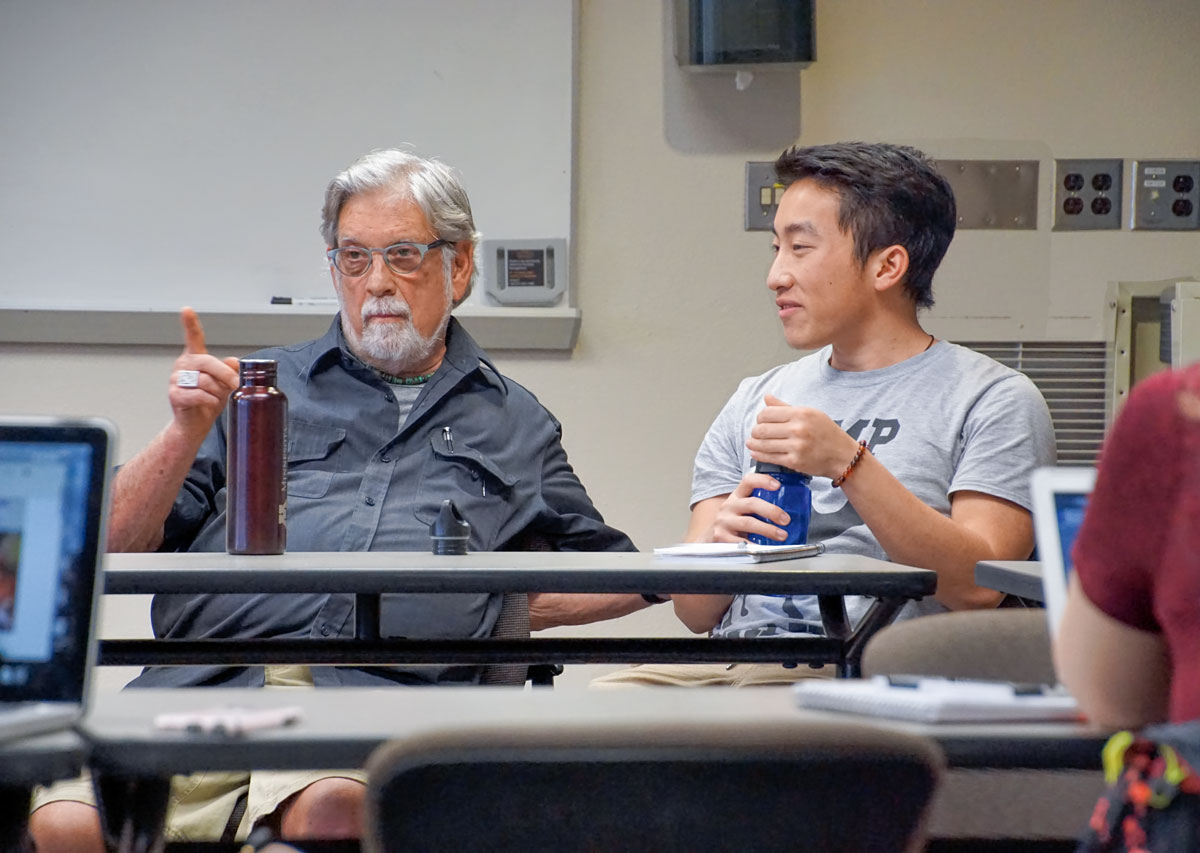For 47 years, School of Social Work professor Mike Baizerman has been been teaching undergraduates in the youth studies program, master’s students in the youth development leadership (YDL) program, and doctoral students across the college—many now faculty in youth studies, education, and social work.
His style and pedagogy are atypical. Soua Thao, ’18, remembers vividly the first day of her freshman seminar with Baizerman.
“He walks in five minutes late, chomping on some peanuts, leans back against a desk, looks at us, and asks, ‘What do you guys want to learn?’” she recalls. The introduction was a little shocking to a recent high school grad, she says, but the class soon became her favorite. “It was exciting to go to a class I could shape into what I wanted,” says Thao, “but it was also scary.”
Youth studies graduate, Marion Barber, ’17, agrees that Baizerman’s style of teaching is “kind of scary” initially. He adapts and adjusts according to the needs of the class, Barber says, and “it allows us to adapt and adjust with him.”
“He asks students about their experience and does it more naturally and delves deeper” than most teachers, Thao explains. “He remembers what you tell him and checks in. He genuinely, really cares.”
Leadership for a unique program
Social work visionary Gisela Konopka founded the University’s Center for Youth Development and Research in 1970 and recruited Baizerman to Minnesota in 1972. The current youth studies program developed from Konopka’s center, and Baizerman has been at its heart since its creation. The program’s unique character among undergraduate programs and its appeal to many nontraditional students is credited to his leadership.
The program asks four questions: Who are young people? Why do we care? What should be done? And what should or must I do? The last question refers to vocation.
“We don’t teach students,” Baizerman says. “We invite people in the role of student to learn. We want them to learn about young people, how scholarship understands them, and how youth policy, programs, and services tie to hands-on, direct youth work with them.
“Youth studies culture is not hierarchical. It’s horizontal,” he explains. “And it’s filled with play not just because it’s about young people but because it has to do with life, and play is serious life. Everybody else around here deals with the great sadnesses of human suffering. We don’t! For us, play is one way of being present and co-present and available to others—one way of doing youth work and of being a youth worker.”
A better place for young people
The son of a Russian Jewish sculptor, Baizerman grew up in New York City. He earned his social work master’s degree from Columbia University in 1965, “in the middle of the Civil Rights movement and at the beginning of the poverty program,” he notes. In New York he worked with gang members and did community organizing, then was a social work officer in the U.S. Public Health Service on the Crow–Northern Cheyenne Reservations in Montana.
He went on to earn a doctoral degree in social work and a master’s degree in public health from the University of Pittsburgh. He also worked on a master’s degree in medical sociology. He wanted all those degrees, he says, because he needed to be able to view the world with the structural kind of understanding of sociology and public health. When he’s working, Baizerman asks himself, “What can you milk out of this research to make the world a better place for and with young people?”
“I wasn’t looking for achievement,” he says of his career, “I was looking for ways of playing seriously and meaningfully in the everyday lives of young people.”
Baizerman arrived at the University of Minnesota on May 9, 1972.
“The University was on strike when I got here and I thought, ‘This is going to fun!’” he says. “And it was—and is!”
Read more about Michael Baizerman on his faculty page.
Story by Jacqueline Colby | Photo by Julie Cutting | Spring/summer 2019
 Mike Baizerman and a student in the classroom
Mike Baizerman and a student in the classroom